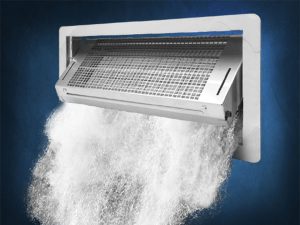A Homeowner’s Crawl Space Inspection Checklist
During the summer months, it is a good idea if you are a homeowner to check your crawlspace. A crawl space checkup usually does not make the spring maintenance list but it should. Here are what the professionals say when it comes to making sure your crawlspace is up to par.

A crawlspace is often overlooked but can have a huge impact on indoor air quality, energy efficiency and long-term ownership costs. The summer months are hot and humid and can lead to problems in a crawlspace. Here are several reasons why this can happen.
Hot, Humid Air Infiltration
In most areas in the country summer is hot and humid outside. The interior of our home is safe from this, but the outside elements can infiltrate the crawlspace. Crawlspaces, especially in older homes, have open vents built into the foundation wall. The purpose of these holes was to allow natural ventilation. The air movement would keep the crawl space dry and fresh. Professionals in the industry have discovered that these open vents are doing more harm than good. Outside air that is humid has a ton of moisture and during the summer there is a lot. Crawlspaces are usually cooler so once the hot humid air flows into the crawlspace the water is left behind. There are many surfaces that the moist air can condense onto such as the wood framing, concrete wall, metal HVAC equipment etc. This can cause mold/mildew growth, wood rot to floor joists, damage to insulation and corrosion of HVAC equipment.
HVAC Inefficiency
This leads to HVAC problems which is the next reason. During warm months of the year our AC is running a lot. When your home has a crawl space, this is the perfect place to locate HVAC equipment and ducting. The problem with this is that ducts carry the cool air up into the house. The hot air that passes from the humid outside through the foundation vents can cause the duct equipment to heat up. This will warm the air that the HVAC system cooled for your home. This is not only counterproductive and makes the unit work harder but is also bad on your energy bill.
Liquid Water Intrusion
This is a nasty problem and can come from many different sources. The most common source is the water around a home’s foundation. This comes from rainstorms or watering the landscaping. It is important to pay attention to the amount of water around our crawlspace. This can lead to bulk water pressure against the below-grade wall or could easily find its way in through open crawl space vents. To help prevent liquid water intrusion make sure water drains away from your foundation, move gardens and shrubs farther away from the foundation and make sure your gutters are clear from debris and moving water a proper distance from the home.
Insects and Rodents
All of the pests we don’t want around usually like the moist dark crawl spaces. Termites are one that can really destroy a home. Mice and rates find safe shelter in a crawl space and love to burrow in fiberglass insulation. These pests can bring allergens, odors and contamination.
In order to avoid these problems, here is a checklist to follow. During the warmer months, check for mold growth, mildew, structural damage, standing water, damp soil or odors, pest or rodent activity.
